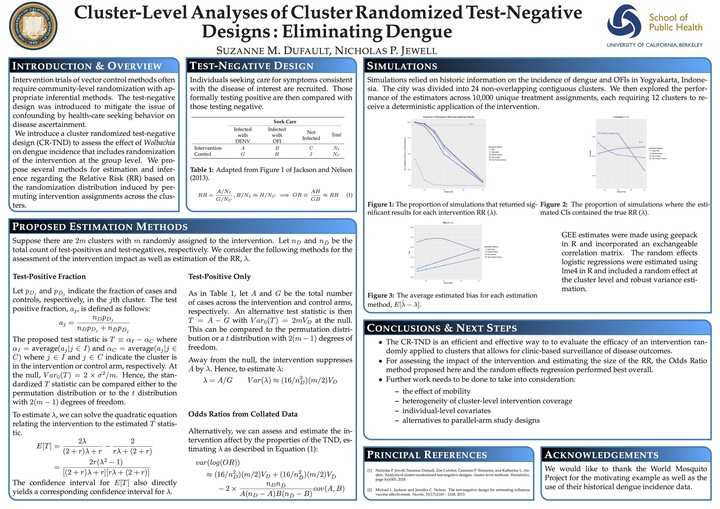Cluster-Level Analyses of Cluster Randomized Test-Negative Designs: Eliminating Dengue
 Image credit: Suzanne Dufault
Image credit: Suzanne Dufault
Abstract
Motivated by a current vector control trial designed to reduce dengue incidence, we propose the Cluster-Randomized Test-Negative Design (CR-TND) to assess a binary end-point exploiting the test-negative design. We propose two ways of estimating the Relative Risk (RR); (i) a modified two-sample t-statistic with permutation-based inference, and (ii) an Odds Ratio (OR) approach that appropriately controls for clustering.
In simulation studies of 24 clusters assigned to parallel treatment arms with RR = 1, 0.6, 0.5, 0.4, 0.3, we compared the performance of the proposed methods to GEE estimation with robust inference and to random effects (RE) regression with random intercepts for each cluster. GEE performed poorly across all metrics. The desirable Type I error rate was produced by our t-test method. For each RR, all methods (except GEE) displayed 92% confidence interval coverage or higher, with the t-test method consistently above 94%. Further, the average estimated SD for each method (except GEE) was within 2% of the truth.
We briefly compare the described approaches to one that uses information only on cases through comparison across the two randomized arms.